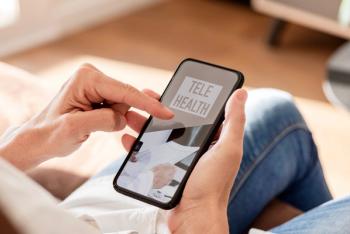
Bringing normalcy back to elective hospital procedures
Elective surgeries are the lifeblood of hospitals and health systems, accounting for 60% of total hospital revenue.
Elective surgeries are the lifeblood of hospitals and health systems, accounting for 60% of total
But that revenue dried up over a two-week span in March, as the nation came to grips with the COVID-19 pandemic. Hospitals in coronavirus hotspots cancelled surgeries to protect the public and conserve resources, and other hospitals in non-affected or slightly affected areas quickly followed suit as ventilators and personal protective equipment (PPE) became scarce.
The industry is losing an estimated
As the first wave of infections has now abated somewhat, hospitals are taking cautious steps toward reopening their surgical wings for elective procedures to clear backlogs and start revenue flowing again. This is a hospital-by-hospital or region-by-region decision since infection rates and testing protocols still vary widely.
No hospital has been immune to the financial crunch of canceled surgeries and higher labor and equipment costs to treat infected patients, so getting the recovery right is critical. Mobile apps can be part of that recovery effort, to screen patients and employees for potential coronavirus risk and to help patients adequately prepare for procedures to reduce cancellation rates. Apps also can be used as effective communication tools to encourage patients to return to the health system for routine screening and care for chronic conditions.
Coronavirus tanks meager hospital profits
In the best of times, hospitals operate on razor thin margins, with an industry average earnings before interest, tax, depreciation and amortization (EBITDA) of under 2%. A Kaufman Hall report on
Health systems have long been dealing with rising costs for labor, equipment, supplies and medications, as well as the continued move from fee-for-service contracts in favor of value-based care. Hospitals have been offsetting rising costs through even greater productivity gains, but the fallacy of that became clear as facilities began running out of PPE and supplies soon after the virus hit.
Losing 60% of your revenue stream seemingly overnight while costs skyrocket is never a recipe for success. That’s why hospitals are looking to restart elective services—stat.
4 obstacles that hospitals must surmount
A rebound in COVID-19 cases as cities, regions and states open back up remains a possibility, which is why hospitals should proceed slowly with the resumption of elective procedures. Executives should keep the following four issues in mind.
- Increasing testing capacity. A survey taken in late April indicates that nearly 90% of hospitals plan to
test patients perioperatively , but that only 27% were currently able to do so. The main barriers to increased testing are shortages of reagents and testing swabs.
Further, 80% said they intended to screen all employees for the coronavirus before resuming elective procedures but only one-third believed they could obtain enough tests for their clinical staff to do so. Overall, respondents believe testing capacity would need to double before elective procedures could resume fully.
- Easing patient concerns. As the pandemic hit, patients who believed they had the virus were encouraged to stay at home unless their breathing was impacted. In addition to halting elective procedures, many medical practices closed for patients except for those with emergent conditions. As a result, hospital volumes for non-COVID-19 cases dropped sharply as people managed on their own.
Now that the messaging has changed from stay at home to come on in, how do providers communicate a very different message from just weeks earlier, especially to those with chronic conditions?
- Managing a surge, personnel (or not). No one can predict whether pent-up demand for elective surgeries and delayed procedures will overwhelm hospitals or keep operating room suites and procedure rooms empty. Much will depend on local conditions and how well a facility can get its message across.
The availability of personnel is also a concern. If your facility has seen many coronavirus patients, your front-line staff likely have been working insane hours and need time to rest, recuperate and reconnect with family and friends.
- Becoming more efficient. By the time hospitals reopen fully, the potential case backlog could exceed 45 days. Because cashflow has been severely affected, facilities want those folks to return, making efficiency critical for both providers and patients. Efficiency benefits providers and facilities through fewer costly cancellations or preventable readmissions while optimizing surgical and procedures rooms and personnel. Patients benefit by being properly informed and ready for their procedures, receiving the care they need without delay.
How technology can help
Smartphones are nearly ubiquitous among American adults, including those 65 and older. Apps are the preferred way people interact with their phones, using nine apps every day and
To help ease the procedure backlog, create efficiencies and save money through fewer cancellations and preventable readmissions, providers can “prescribe” a perioperative app that educates patients and helps them get ready for their procedures.
Nearly three-quarters of same-day cancellations are attributable to inadequate patient preparation, and a modest improvement in the
Hospitals and health system that have Epic or Cerner electronic health records (EHR) systems can find perioperative mobile apps that can be easily integrated into workflows. Instead of a staff member having to call each patient, imagine them calling only those patients who haven’t checked off perioperative tasks on their app checklists.
The app can include information about the procedure, educational materials, post-care instructions and a checklist of items that need to be completed before showing up on the day of the procedure. Time to stop warfarin? A tick mark appears next to the app as a reminder. Check the item off, and the tick mark disappears. Information from apps flows to the patient record where data can be rolled up into a dashboard so staff can manage the exceptions.
Other apps on the market are helping hospitals manage the pandemic through proactive communications and authoritative information for employees or the community. Apps can also be used to screen workers and patients for potential COVID-19 symptoms.
Like other industries, healthcare isn’t expected to suddenly return to normal. Normalcy will come only through time and a concerted effort by healthcare executives to make it happen. Mobile apps can be part of the recovery process.
About the Author
Newsletter
Optimize your practice with the Physicians Practice newsletter, offering management pearls, leadership tips, and business strategies tailored for practice administrators and physicians of any specialty.








